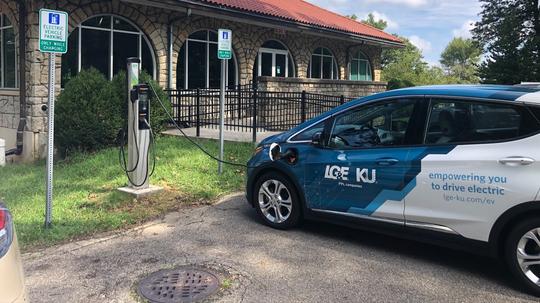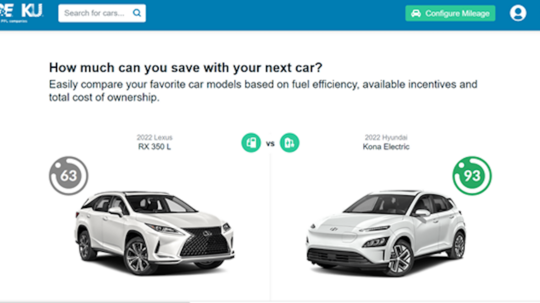
According to a study published in June by the Edison Electric Institute, which represents all U.S. investor-owned electric companies, the number of electric vehicles on the road in the U.S. is projected to jump from 2.4 million at the end of 2021 to 26.4 million in 2030. While recent national legislation intends to revive and expand EV tax credits, the country still needs to hit the accelerator on installing the charging infrastructure needed to power the expected increase in EV adoption. In fact, the same EEI study says at least 12.9 million charge ports will be needed to support the projected number of EVs on the road in 2030.
A mix of public and private entities, including utilities, are working to grow America’s network of EV charging stations and utilities here in Kentucky are doing their part. The commonwealth’s largest utilities, Louisville Gas and Electric Company and Kentucky Utilities Company, have installed nearly two dozen publicly accessible EV charging stations across Kentucky and are working to install fast charging stations in the near future. Additionally, LG&E and KU , along with their parent company, PPL, are part of the National Electric Highway Coalition – a partnership of U.S. utilities focused on providing drivers access to efficient, fast electric vehicle charging stations along major highway systems, allowing the public to travel long distances in confidence.
“We know that, along with the cost to purchase an EV, range anxiety is among the leading factors keeping drivers from choosing to go electric,” said LG&E and KU Vice President of Customer Services Eileen Saunders. “We’re committed to working with our industry partners, elected officials, communities and businesses across our service territories to do what we can to help remove that barrier and empower drivers to go EV and reduce their carbon footprint.”
For drivers powering up on a standard 120-volt outlet or a 240-volt, dryer-style outlet from the convenience of their home, the utilities say plugging in on LG&E or KU’s electric rates is like spending a dollar a gallon for gas – a fact most would consider an attractive alternative to the high gas prices of this summer.
The utilities also offer programs and tools for customers, including partnering with businesses interested in hosting EV charging stations of their own. For those considering whether to purchase an EV, the vehicle section of the LG&E and KU online Marketplace has data on more than 2,300 conventional, hybrid and electric vehicles and provides side-by-side comparisons on criteria that interest customers most. The site also provides a one-of-a-kind efficiency rating and lifetime costs to compare options to help customers decide if purchasing an EV is the right choice for them.

Visit lge-ku.com/ev to learn more about the utilities’ related tools and offerings.
Louisville Gas and Electric Company and Kentucky Utilities Company, part of the PPL Corporation family of companies, are regulated utilities that serve more than 1.3 million customers. More information is available at lge-ku.com.


